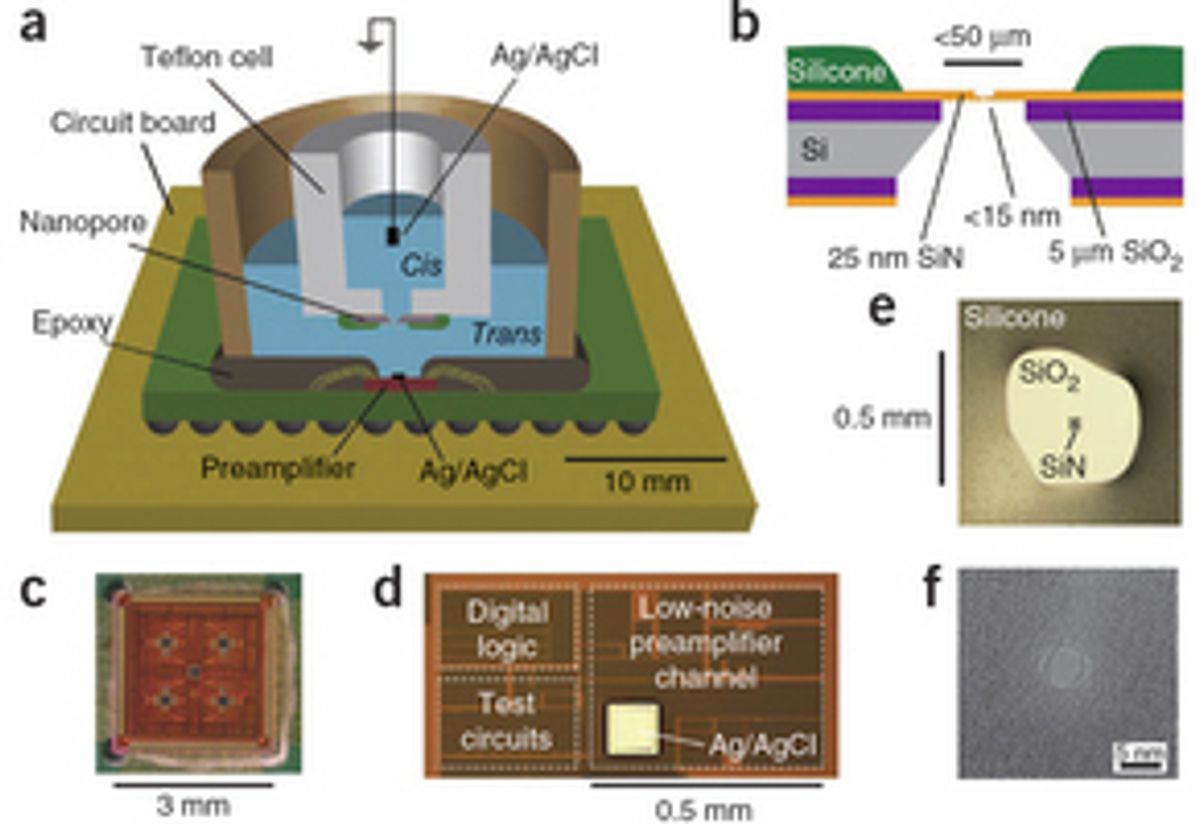In the march toward inexpensive DNA sequencing, so-called “nanopore sequencing” has shown itself to be a promising technology.
However, there has been one major drawback with the nanopore solution: The weakness of the signals generated from the nanopores when the DNA passes through them. To compensate for this, researchers have mainly tried to slow the DNA as it moves through the nanopores.
Late last year, IEEE Spectrumreported on research coming from a Harvard team that was taking a different approach. Instead of trying to slow down the DNA, the team, which is part of chemistry professor Charles Lieber’s laboratory, looked at boosting the signal from the electronics.
"We put a tiny amplifier chip directly into the liquid chamber next to the nanopore, and the signals are so clean that we can see single molecules passing through the pore in only one microsecond," says Jacob Rosenstein, a Ph.D. candidate in electrical engineering at Columbia and lead author of the paper. "Previously, scientists could only see molecules that stay in the pore for more than 10 microseconds."
The research team, which has published its work in the journal Nature Methods, found previous circuitry simply wasn't up to the task.
"We saw that nearly everybody else measures nanopores using classical electrophysiology amplifiers, which are mostly optimized for slower measurements," Physorg quoted Shepard as saying. "So we designed our own integrated circuit instead."
Their measurement platform involves a CMOS preamplifier with solid-state nanopores in thin silicon nitride membranes.
Shepard and his team appear confident that they can produce dramatic improvements to the technology. "With a next-generation design, we may be able to get a further 10X improvement, and measure events that last only 100 nanoseconds,” says Shepard. “Our lab is also working with other electronic single-molecule techniques based on carbon nanotube transistors, which can leverage similar electronic circuits. This is an exciting time!"
Dexter Johnson is a contributing editor at IEEE Spectrum, with a focus on nanotechnology.




